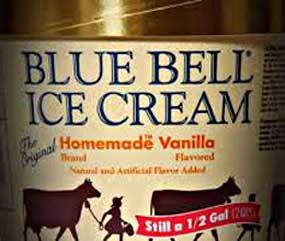 Blue Bell ice cream Listeria recalls prompted many retailers across the U.S. to completely remove the brand from store shelves, but now the recalls are giving way to restocking decisions. Among the first companies to return shelf space to Blue Bell is San Antonio-based H-E-B Grocery Stores. A spokesperson for the chain of more than 350 stores told KTRK-TV that a gradual return has begun.
Blue Bell ice cream Listeria recalls prompted many retailers across the U.S. to completely remove the brand from store shelves, but now the recalls are giving way to restocking decisions. Among the first companies to return shelf space to Blue Bell is San Antonio-based H-E-B Grocery Stores. A spokesperson for the chain of more than 350 stores told KTRK-TV that a gradual return has begun.
Leslie Sweet of H-E-B said Blue Bell is a brand Texans know and love, but the grocery company had to stay true to its commitment to safe food when it removed the ice cream last month during a series of three different recalls by Blue Bell. The recalls were associated with deepening links between Blue Bell ice cream products and two clusters of listeriosis — the first in Kansas and the second identified in Texas. Three of five case patients in Kansas died and the Centers of Disease Control and Prevention (CDC) has said unequivocally that Blue Bell brand products produced in facilities in Texas and Oklahoma are the source of the outbreak.
The FDA and CDC, along with state health agencies, are still concerned that tainted Blue Bell ice cream is contained in home freezers by families and individuals unaware of the Listeria recalls. The bacteria, Listeria monocytogenes, grows even under freezing temperatures. CDC recommends that consumers do not eat any recalled products and products made at the Blue Bell Creameries’ Oklahoma facility. These products can be identified by checking for letters “O,” “P,” “Q,” “R,” “S,” and “T” following the “code date” printed on the bottom of the product package. The Oklahoma plant remains in shutdown mode as regulators and the company look for the root of the Listeria problem there.
Meanwhile, officials admit that the outbreak investigation is complex and ongoing. National food safety lawyer Fred Pritzker told the Dallas Morning News recently that questions remain about overall conditions in Blue Bell manufacturing facilities. “Revelations have occurred about different plants, different lines, different time periods,” said Pritzker, who also publishes the Food Poisoning Bulletin. “The information about these failures should have been known to the company at an earlier time, and the word should have gotten out a lot sooner had their test results and safety systems been more robust.”




